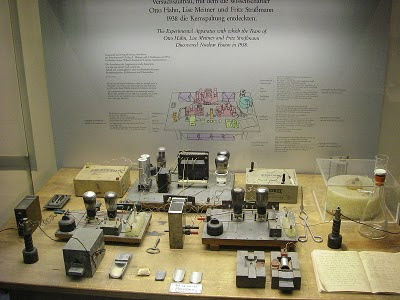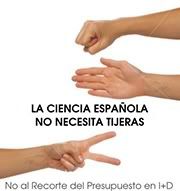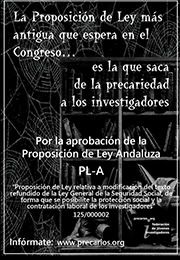 Hoy 24 de marzo, es el día de Ada Lovelace (Ada Lovelace’s Day) , una jornada dedicada por los bloggers de todo el mundo, a llamar la atención acerca de las mujeres que han sobresalido en los campos de la ciencia y la tecnología. Por si no lo sabéis, Ada Lovelace (hija del famoso poeta británico Lord Byron) es considerada por muchos como la primera programadora de la historia, con sus programas para la ‘máquina analítica’ de Babbage.
Hoy 24 de marzo, es el día de Ada Lovelace (Ada Lovelace’s Day) , una jornada dedicada por los bloggers de todo el mundo, a llamar la atención acerca de las mujeres que han sobresalido en los campos de la ciencia y la tecnología. Por si no lo sabéis, Ada Lovelace (hija del famoso poeta británico Lord Byron) es considerada por muchos como la primera programadora de la historia, con sus programas para la ‘máquina analítica’ de Babbage.La forma de celebrar el día, consiste en publicar un post sobre una heroína de la ciencia. Mi elegida es Lisa Meitner. (Viena, 7 de noviembre de 1878 - Cambridge, 27 de octubre de 1968). Nacida en Austria, aunque luego nacionalizada sueca, fue una física que formó parte del equipo que descubrió la fisión nuclear, un logro por el que únicamente su colega, el alemán Otto Hahn, recibió el reconocimiento de la Academia Sueca, que le otorgó el Premio Nobel de Química en 1945. Lisa Meitner es considerada hoy día, además de cómo “madre de la bomba atómica”, como uno de los ejemplos más sangrantes de un descubrimiento femenino no reconocido por el Comité de los Nobel.
La tercera de ocho hijos de una familia judía acomodada vienesa, obtuvo su doctorado, a pesar de las restricciones de aquella época para la presencia femenina en las aulas, en el año 1907. Allí comenzó su trabajo en equipo con el físico Otto Hahn y juntos participaron en el desarrollo del nuevo campo de la física nuclear, una relación que continuó después de que Meitner tuviera que abandonar su país, e instalarse en Suecia, obligada por el ascenso del nazismo.
En 1939 publicó, junto con Frisch un trabajo en Nature en el que, empleando el modelo de la "gota líquida" explicaron y pusieron nombre a la fisión nuclear.
A pesar de ello, y debido a la separación de Lise de sus antiguos colaboradoes y a su exilio, el comité del Nobel no tuvo en cuenta su contribución, un error que se remedió parcialmente en 1966 cuando Meitner recibió, junto a Hahn el Premio Fermi.
En 1997, el elemento 109 recibió el nombre de Meitnerium (Mt) en su honor. Por ahora, ningun elemento ha recibido el nombre de Hahn... ¿justicia poética?
 The Ada Lovelace's Day is a blogging international day to draw attention to women excelling in technology (The Ada Lovelace Day). To take part, you must to choose a tech heroine and then publish a blog post, any time on Tuesday 24th March 2010. Augusta Ada King, Countess of Lovelace (1815-1852), know today as Ada Lovelace, is mainly known for as the "first programmer" since she was writing programs for the early mechanical general-purpose computer, the Babbage's analytical engine.
The Ada Lovelace's Day is a blogging international day to draw attention to women excelling in technology (The Ada Lovelace Day). To take part, you must to choose a tech heroine and then publish a blog post, any time on Tuesday 24th March 2010. Augusta Ada King, Countess of Lovelace (1815-1852), know today as Ada Lovelace, is mainly known for as the "first programmer" since she was writing programs for the early mechanical general-purpose computer, the Babbage's analytical engine.This year, my heroine is Lise Meitner (Vienna, Austria, November 7, 1878. Cambridge, England, October 27, 1968) was an Austrian-born, later Swedish physicist who worked on radioactivity and nuclear physics. Meitner was part of the team that discovered nuclear fission, an achievement for which her colleague Otto Hahn was awarded the Nobel Prize in Chemistry by the Royal Swedish Academy of Sciences in 1945, overlooking Lise Meitner, who collaborated with him in the discovery and gave the first theoretical explanation of the fission process. Meitner is often mentioned as the 'mother of the nuclear fission' and one of the most glaring examples of women's scientific achievement overlooked by the Nobel committee.
Lise Meitner was the third of eight children of a Viennese Jewish family. Owing to Austrian restrictions on female education, Lise Meitner only entered the University of Vienna in 1901. Doctorate in hand, she went to Berlin in 1907 to study with Max Planck. She began to work with a chemist, Otto Hahn, she doing the physics and he the chemistry of radioactive substances. The collaboration continued for 30 years, each heading a section in Berlin's Kaiser Wilhelm Institute for Chemistry.
After the Anschluss (German annexation of Austria in March 1938), Lise Meitner had to emigrate, but the collaboration continued secretely. In 1939 Meitner and Frisch explained (and named) nuclear fission, using Bohr's "liquid drop" model of the nucleus; their paper appeared in Nature (February 11, 1939). The proof of fission required Meitner's and Frisch's physical insight as much as the chemical findings of Hahn and Strassmann
But the separation of the former collaborators and Lise's scientific and actual exile led to the Nobel committee's failure to understand her part in the work. The Nobel "mistake", never acknowledged, was partly rectified in 1966, when Hahn, Meitner, and Strassmann were awarded the U.S. Fermi Prize.
In 1997, element 109 was named Meitnerium (Mt) in her honour. No chemical element has received the name of her colleague Hahn.... poetic justice?
Para saber más/To know more













No hay comentarios:
Publicar un comentario